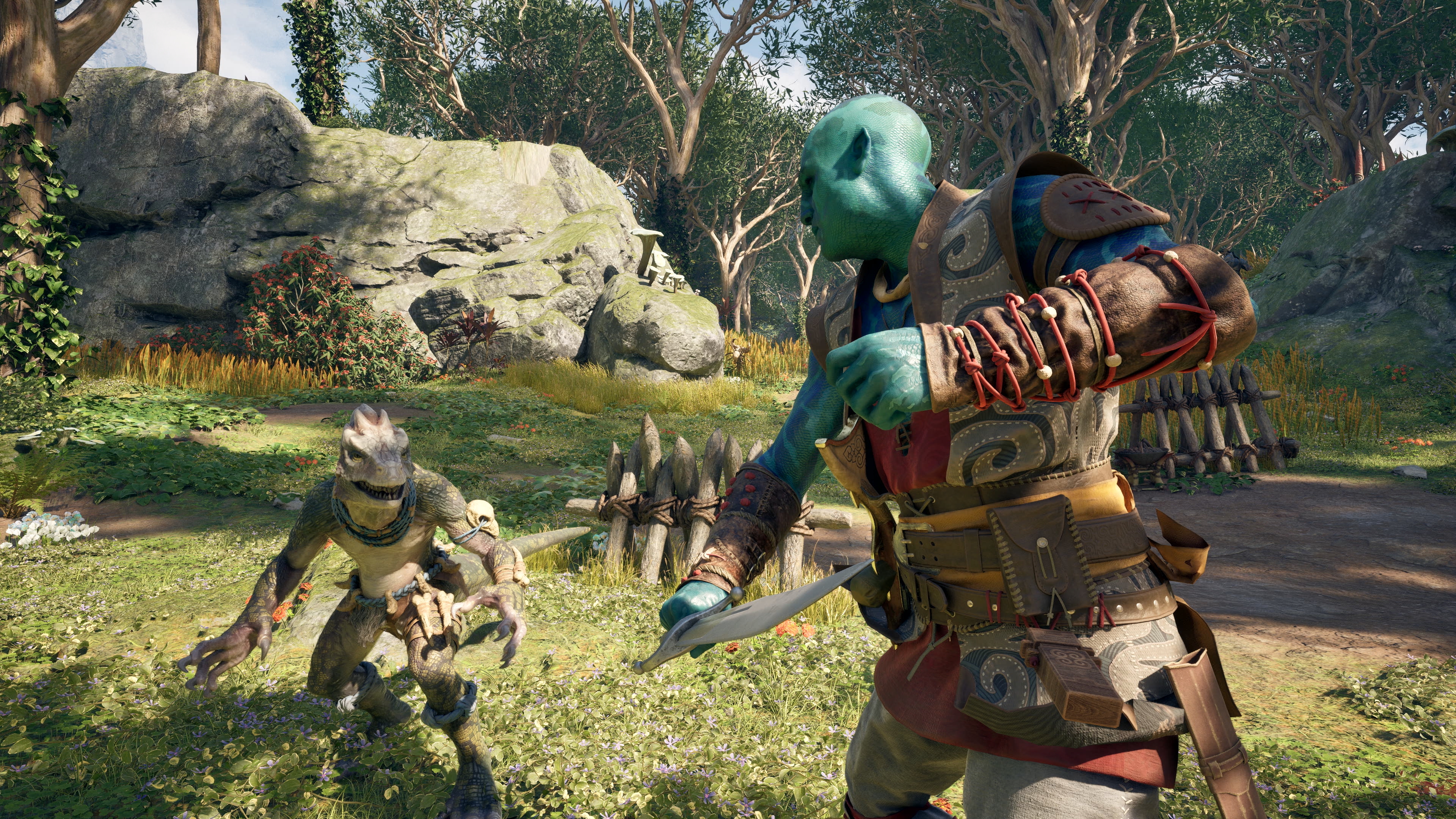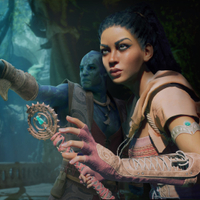If you've been worried about Avowed not looking punchy enough, Obsidian's combat designer has a hitstop animation 'superpower' that might reassure you
Avowed's sword-tuner cut his teeth working on actiony MMOs like Warhammer Online and WildStar.

My ears perk up anytime a game developer says the word "hitstop." It means I'm about to hear some secret sauce, or at least opinions, about how to make a game feel great—specifically how and when to add a short pause mid-combat to make a hit really pop. In early footage of Avowed it's been hard to tell how impactful its combat will really feel, but my hands-on time with the game has been a pleasant surprise. It doesn't have the weight of the finest melee combat games on PC like Mount & Blade 2 or Vermintide 2, but its speedy sword swings still feel better than I expected, while charge attacks really pack a punch.
According to Obsidian VFX lead Ash Kumar, who I interviewed at a recent preview event at Obsidian's offices in southern California, there's one person in particular to thank for how combat's shaped up.
"Max has a superpower of looking at an animation and deciding how much hitstop there should be there for it to feel good," said Kumar.
That's Max Matzenbacher, who joined Obsidian in 2020 after previously working on MMOs including Warhammer Online and WildStar. Kumar had a lot to say about Matzenbacher in his role as Avowed's senior combat designer.
"He has tweaked every weapon with hitstop differently. Like the hammer: The special attack kind of lodges the hammer into the enemy and then brings it down for an area of effect attack. All the tweaking, all the animation timing, all the times when I send him a particle effect and he's like 'I'm going to play it right at this instant,' he's done such a fantastic job. And he's done it with every weapon."
If you right-click and open the video above in a new tab, you'll be able to hear the audio.
Kumar kept the praise flowing. "He's taken a week for a weapon and just constantly tinkered with every minor aspect of it, from the animations to when you move a sword, how an enemy will react to it," he added. "It's fantastic work, and it feels visceral. It feels weighty. When you have a lower-tier weapon than the enemies you're fighting, your weapons aren't going to pass through: they're going to boink off the enemy. The way it feels, you're still doing some damage, but it's miniscule, and the animations and VFX reflect that. We wanted to give useful player feedback on every swing of the weapon."
The biggest gaming news, reviews and hardware deals
Keep up to date with the most important stories and the best deals, as picked by the PC Gamer team.
Avowed details: Everything we know
Avowed companions: Party's all here
Best Avowed builds: Freeform skill builds
Avowed best weapons: What to dual-wield
Best RPGs: The greatest you can play now
As soon as I sat down for an interview with Matzenbacher next I invoked the H word and asked him how he honed his impact instincts.
"If you pay attention to combat in the fighting game community, you come across it pretty early on—hitstop in Street Fighter is one of those things that's just ubiquitous now," he said. Obsidian's combat designers regularly used the term "sense of hitting" to question whether weapons were landing with the appropriate impact.
"On any game that has fighting, even something with a really pulled back camera like an MMO, if you don't have that sense of connection then the game just feels bad. I worked at a studio that was owned by NCSoft, and they put a lot of time and research into what makes something fun, and that's where I got exposed to the term 'sense of hitting.' When I came here the challenge of doing that in first-person was exciting, actually—making that feel crunchy and satisfying."
With a first-person camera, Matzenbacher said that one of the big challenges is conveying "state" to the player—where you're at in the stage of an attack, basically. With a third-person camera it's much easier to tell that you've pulled your hand back to start a sword swing or already passed it through an enemy with a vertical slash. In first-person if the animation has you raising the sword above your head, for example, that moment it's out of view can be confusing in a frenetic battle.
"We've tried to lean into some soft tracking for the player to get them to align to enemies in a way that doesn't feel like we're removing skill from the game, but feels 'correct,'" he said. "The challenge in RPGs is we want you to feel this progression throughout the game, but it can't start in a way that just feels crappy. We play with the timing of the animations, and we've spent a lot of time having the animation state change based on the type of hit. If it's a normal hit we're trying to get that connection to feel right; if it's a hit where you're fighting an enemy that's too strong for you, we kinda try to make it feel like you're hitting an immobile post. Camera shake in first-person makes the game too disorienting, so our UI team has gotten the HUD to shake. Directional blood and VFX, all those feedback cues—I could geek out for hours."
If you right-click and open the video above in a new tab, you'll be able to hear the audio.
Avowed has quite a variety of weapon types, from pistols and muskets to rapid-fire wands to bows to your usual slate of swords, daggers, axes and lances. Add onto that dual wielding and a classless leveling system with abilities to increase attack speed and open up special attacks, and it's pretty hard to say from my limited preview how Avowed's combat will feel 20 hours in. But its developers are at least saying all the right things.

Wes has been covering games and hardware for more than 10 years, first at tech sites like The Wirecutter and Tested before joining the PC Gamer team in 2014. Wes plays a little bit of everything, but he'll always jump at the chance to cover emulation and Japanese games.
When he's not obsessively optimizing and re-optimizing a tangle of conveyor belts in Satisfactory (it's really becoming a problem), he's probably playing a 20-year-old Final Fantasy or some opaque ASCII roguelike. With a focus on writing and editing features, he seeks out personal stories and in-depth histories from the corners of PC gaming and its niche communities. 50% pizza by volume (deep dish, to be specific).


